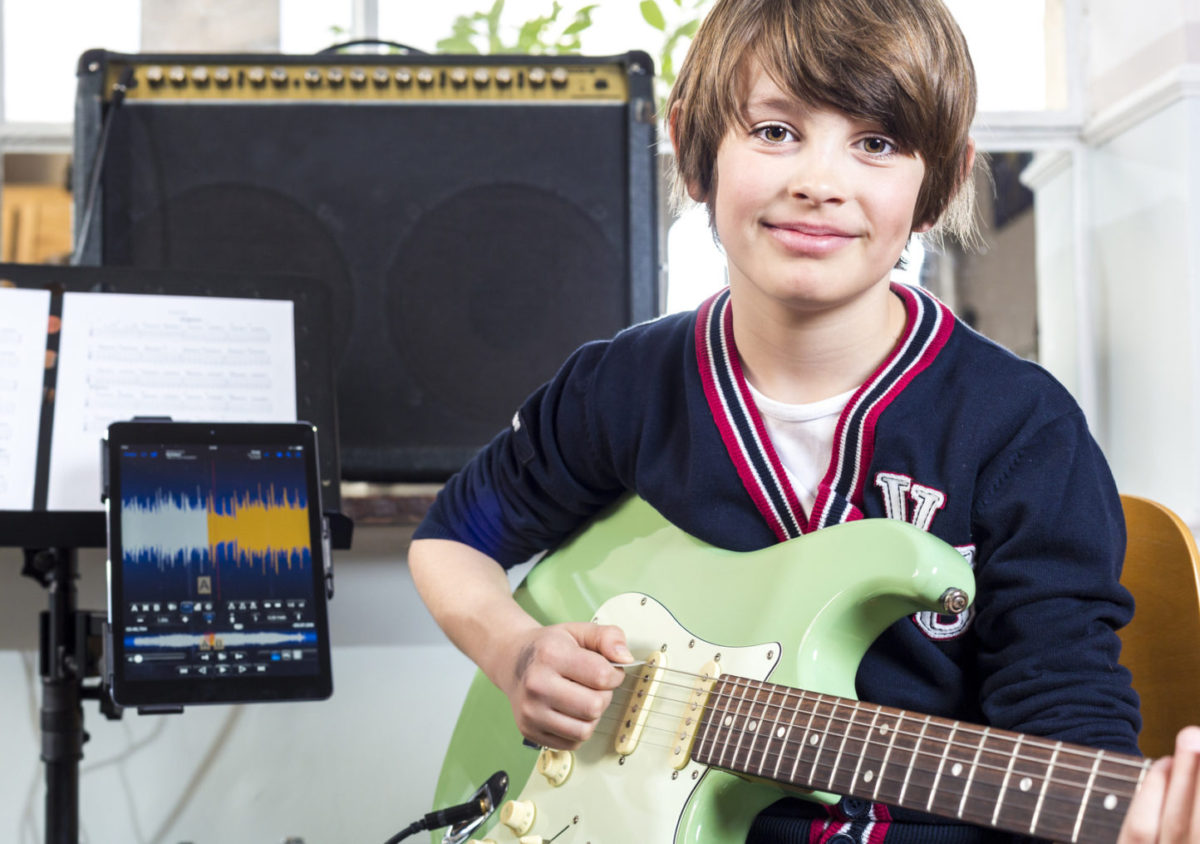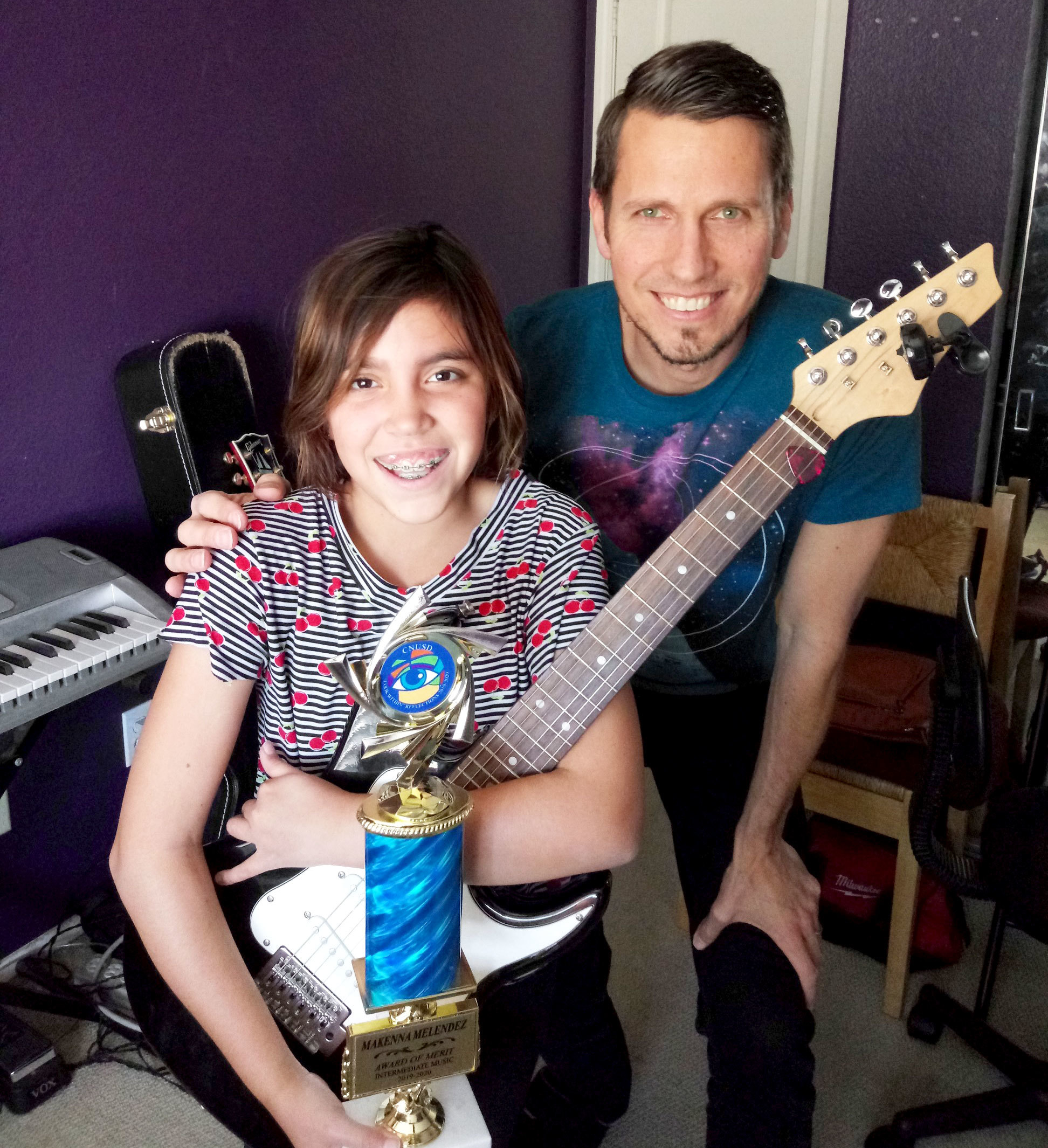Choosing the right guitar is critical to your child/teen's success at learning guitar. The guitar is challenging enough to learn as is, so we want to make sure that the one your student is using is as easy to play as possible!
In this article, I will walk you through the 3 steps to choosing the right guitar for your child and give recommendations of guitars that have consistently worked well for our students.
Step 1: Choose the Right Size Guitar for Your Child/Teen.
There are three primary guitar sizes to choose from: 1/2 size, 3/4 size, and full size.
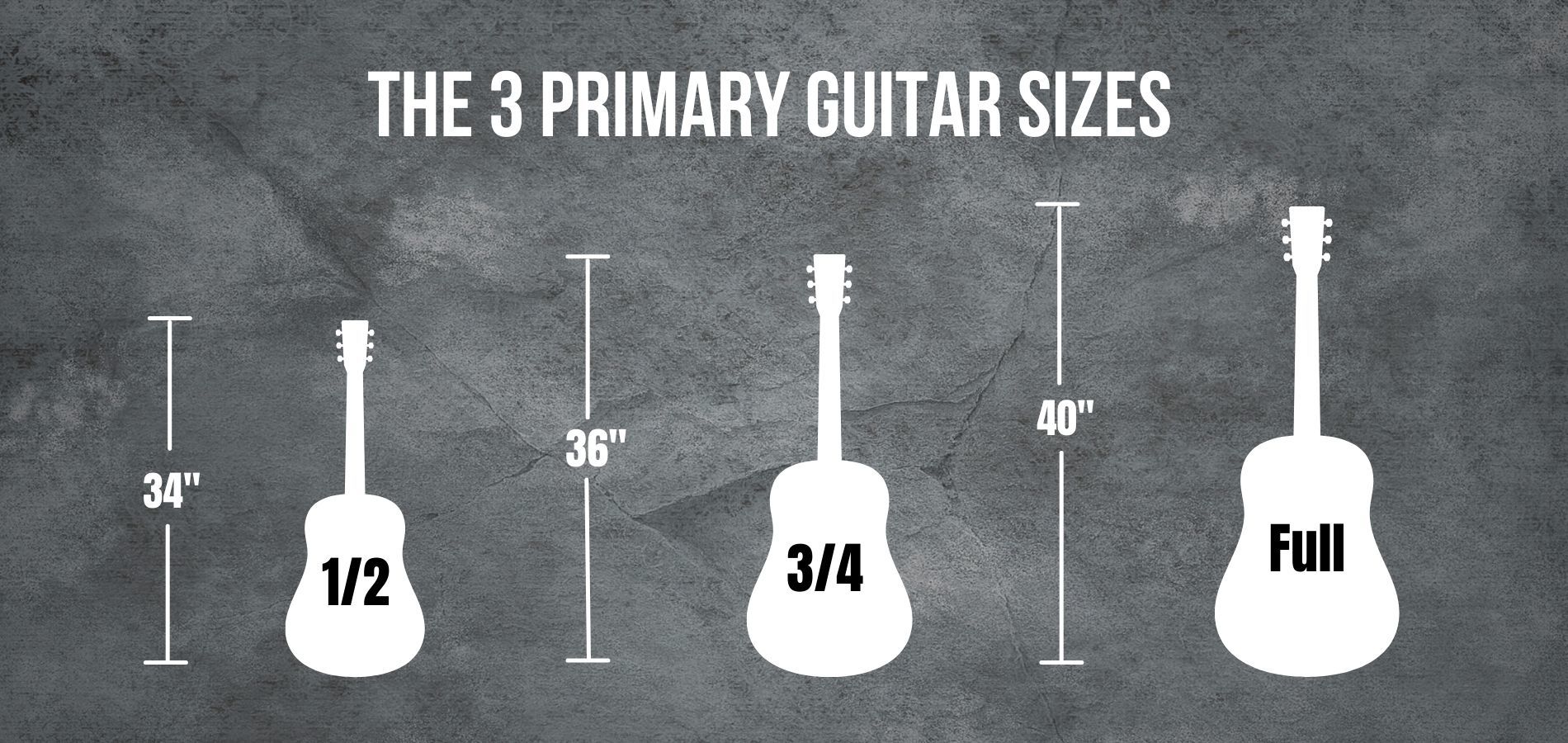
*Note: there is also a 1/4 size guitar that is marketed to fit very young children (under age 6), however we recommend piano as a better choice than guitar for children under age 7. To learn more about the relationship between age and your child's chances of succeeding at learning guitar click here.
The most accurate predictor of what size guitar is right for your child is hand size--and hand size is most accurately measured by height..
How to Choose the Right Guitar Size
The #1 rule in choosing the right guitar size is to base your decision on height, not age.
A simple google search will show that most "experts" advocate using age to determine the right size guitar for guitar students . Unfortunately, student age is not always an accurate predictor of what size guitar a student should be playing.
For example, if the student is somewhat short or tall for their age, their hand size will more closely match students of "average" height that are a year or two younger/older than them. If the purchasing decision is based solely on age, the young guitarist may inadvertently purchase a guitar that is actually too big (or small) for their hand size.
To be certain that you are choosing the right guitar for your child or teen, use the following chart:
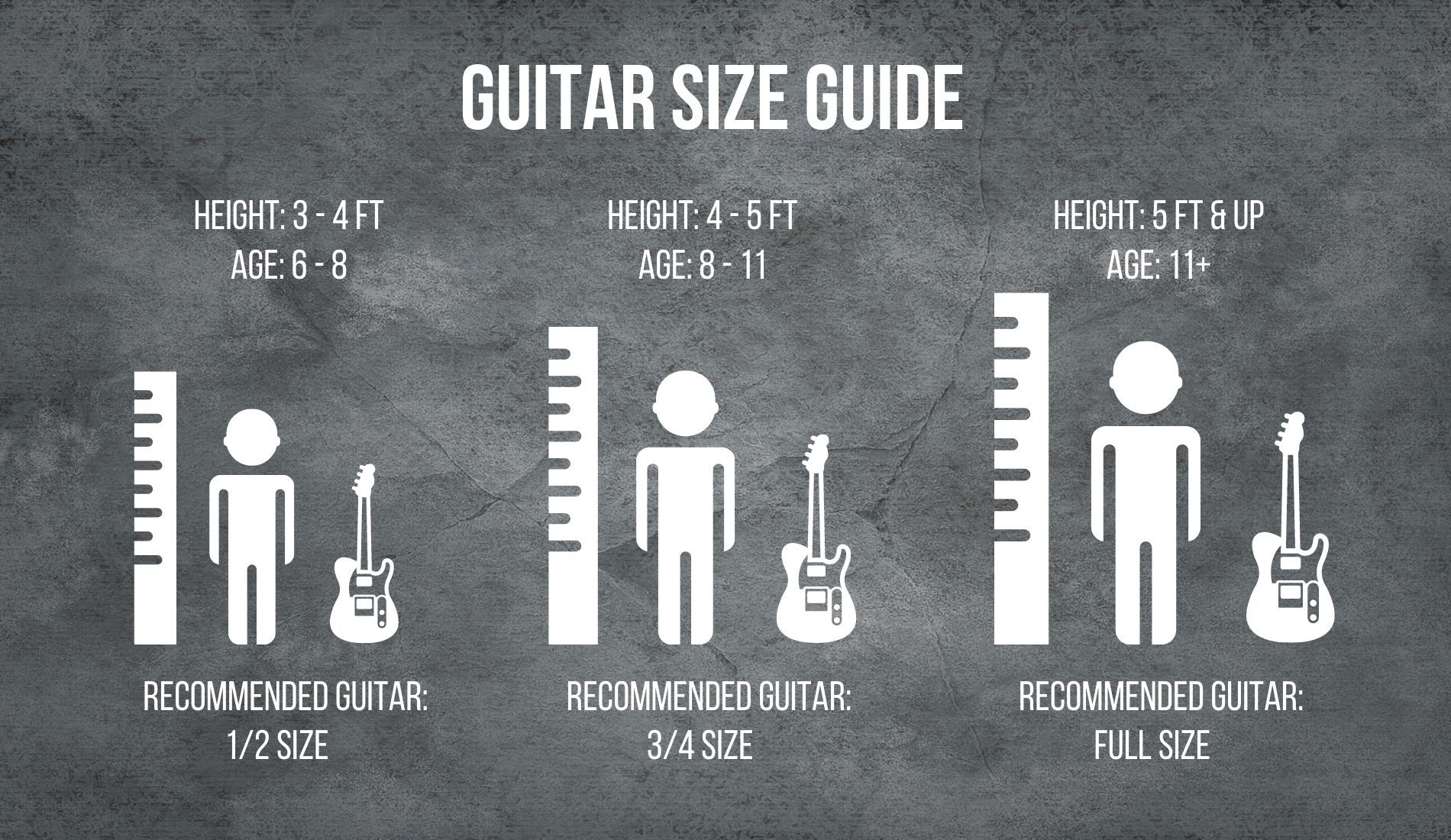
As you see, age is only an estimate based on the child's height. For example, a child that is 5'0 tall at age 11 is better off playing a full size guitar--even though most kids do not reach 5'0 until age 12 or later. In fact, playing a guitar that is too small can be just as problematic as playing a guitar that is too big.
One example of a common problem students encounter when playing a guitar they have outgrown is string muting. String muting is when the fingers unintentionally rub up against other strings thereby "muting" adjacent strings that you normally want to hear (for example, when playing chords).
Step 2: Choose the Right Style Guitar for Your Child/Teen
Inspiration plays a huge role in keeping kids motivated to practice. That being the case, it's important to choose a guitar that aligns with your child's music tastes. If your student likes a lot of acoustic based music like country, for example, than you want to purchase an acoustic guitar. If the student leans more toward rock styles, than an electric is the better choice.
When choosing a guitar, it's important to know that electric guitars are easier to play than acoustic guitars. That being the case, unless the student really resonates with the acoustic guitar I usually recommend the electric guitar as a better choice for beginners. Remember, the guitar is challenging enough to learn as it is, so we want to make it as easy as possible to succeed!
Electric guitars are also more versatile than acoustics as they are able to get both "clean" acoustic-type sounds as well as "overdriven" rock sounds using the amp settings.
Most of the time, kids already know what type of guitar they want to play. However, sometimes (especially in the case of younger kids) they just simply "like the sound of the guitar" without necessarily knowing which type of guitar they like best.
In this instance, I encourage parents to simply show their child pictures of acoustic and electric guitars and ask them which type they like best. When you notice their eyes light up as they look at one versus the other you'll know which type of guitar to choose. If they seem to like both, I would choose the electric.
Step 3: Ensure that the Guitar has Good "Action"
In guitar, "action" is defined as the distance between the strings and the guitar fretboard. If the action is too high, it will be very difficult to press the strings down in order to play notes & chords. It is not difficult to tell if a guitar has good action--simply look at the strings in relation to the fretboard and you will be able to see if the action is high:
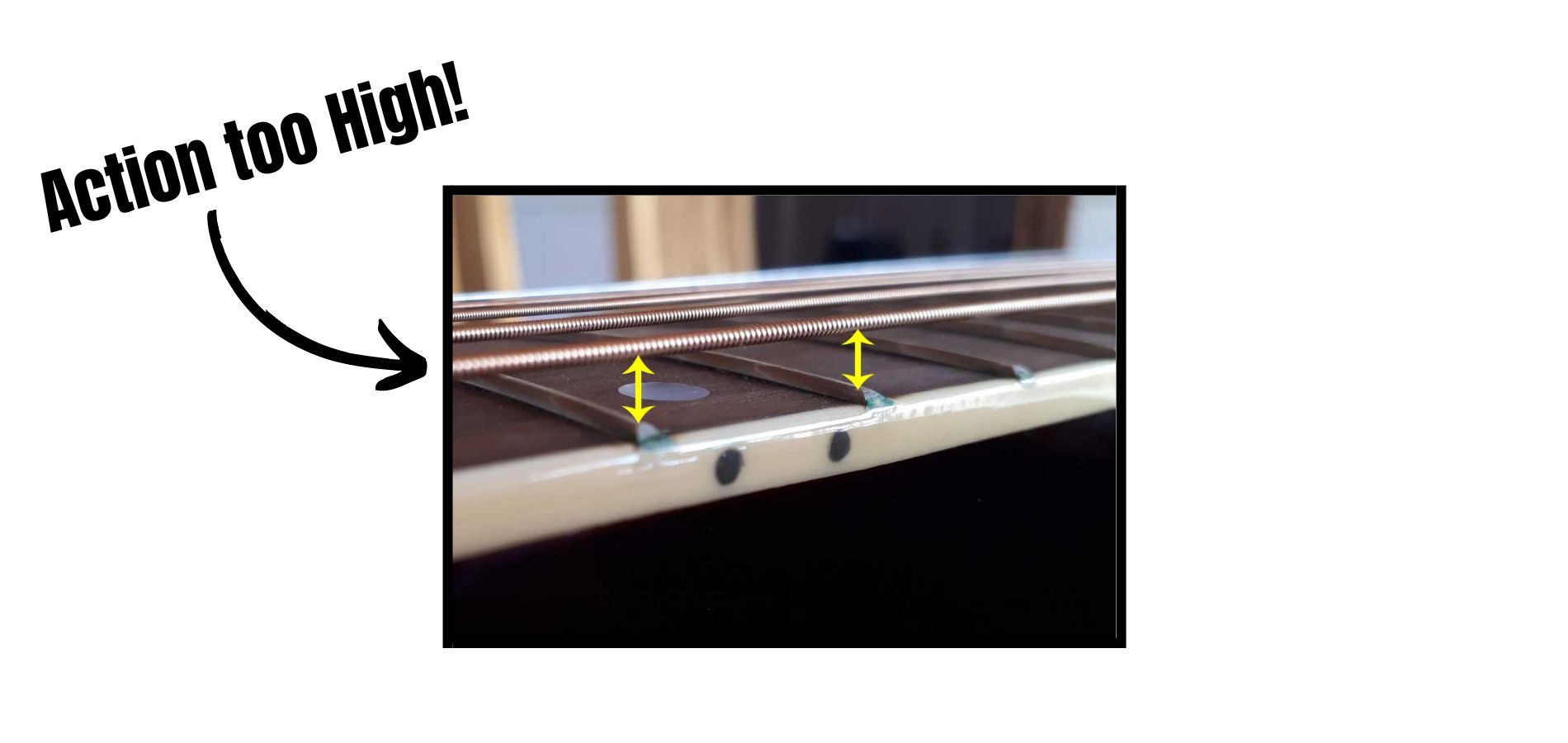
Essentially, you want the strings to be as low to the guitar fretboard as possible. However, you don't want them to be so low that there is an audible "buzz" when you play notes. To be more specific, a guitar with good action will have approximately 1/8 inch of distance between the fretboard and the strings as measured at the 12th fret. The 12th fret location is easy to find as it usually has two dots marking its location:
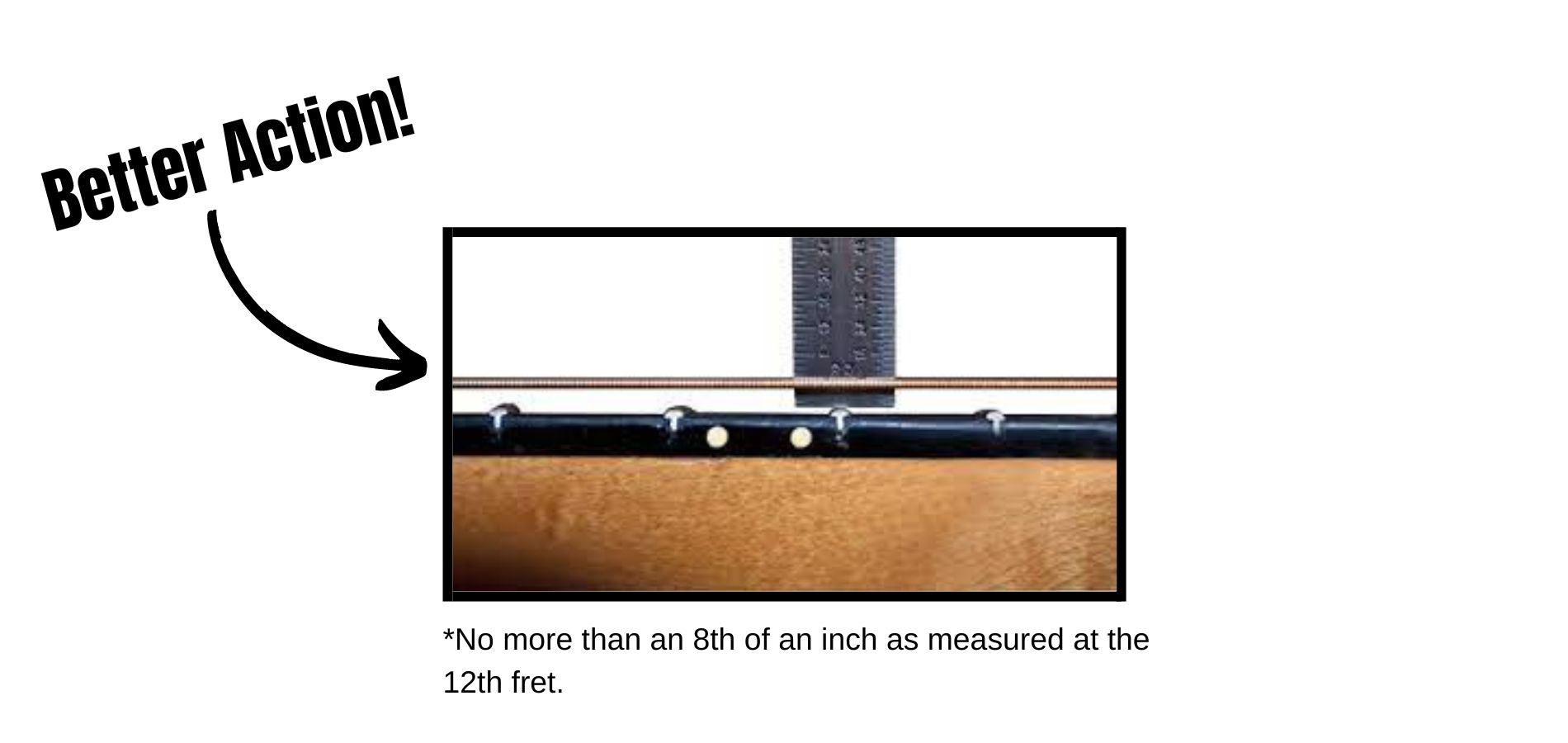
Obviously, checking a guitar's action is only possible if you are able to see the guitar in-person. When ordering online it can be a bit trickier to determine whether or not the action is good. A quick look at the reviews will usually give you a good sense of how well the guitar plays.
Fortunately, there are certain guitar brands that have a reputation for making guitars that play well. Below you'll find guitars that we have found to consistently play well and thus are safe to purchase online.
Kids Guitar Academy Guitar Recommendations
Teaching guitar for over twenty years has put me in contact with A LOT of guitars. I've come to know the strengths and weaknesses of most guitar brands. For example, some very popular brands excel at making electric guitars, while their acoustic guitars are vastly inferior to the acoustics made by lesser popular brands. Here are a few guitars that have consistently served my students well over the years:
1/2 Size Guitars
When it comes to 1/2 size guitars, options are limited. From a manufacturing standpoint, these guitars don't sell as well as larger guitars and so most popular guitar brands don't make them.
Nylon string guitars work best for young students as the strings are softer and easier to play. The main challenge here is to find a nylon string guitar that resembles a guitar and not a toy. In other words, don't buy your child that 1/2 size guitar you found at Target!
Kids Guitar Academy Student Favorite (1/2 Size Guitars):
Price: $129
4.4/5
Yamaha CGS102A 1/2 Size Guitar
When it comes to 1/2 size guitars you can't go wrong with the CGS102A. This guitar is easy to play and soft on the fingers--perfect for the youngest of guitarists.
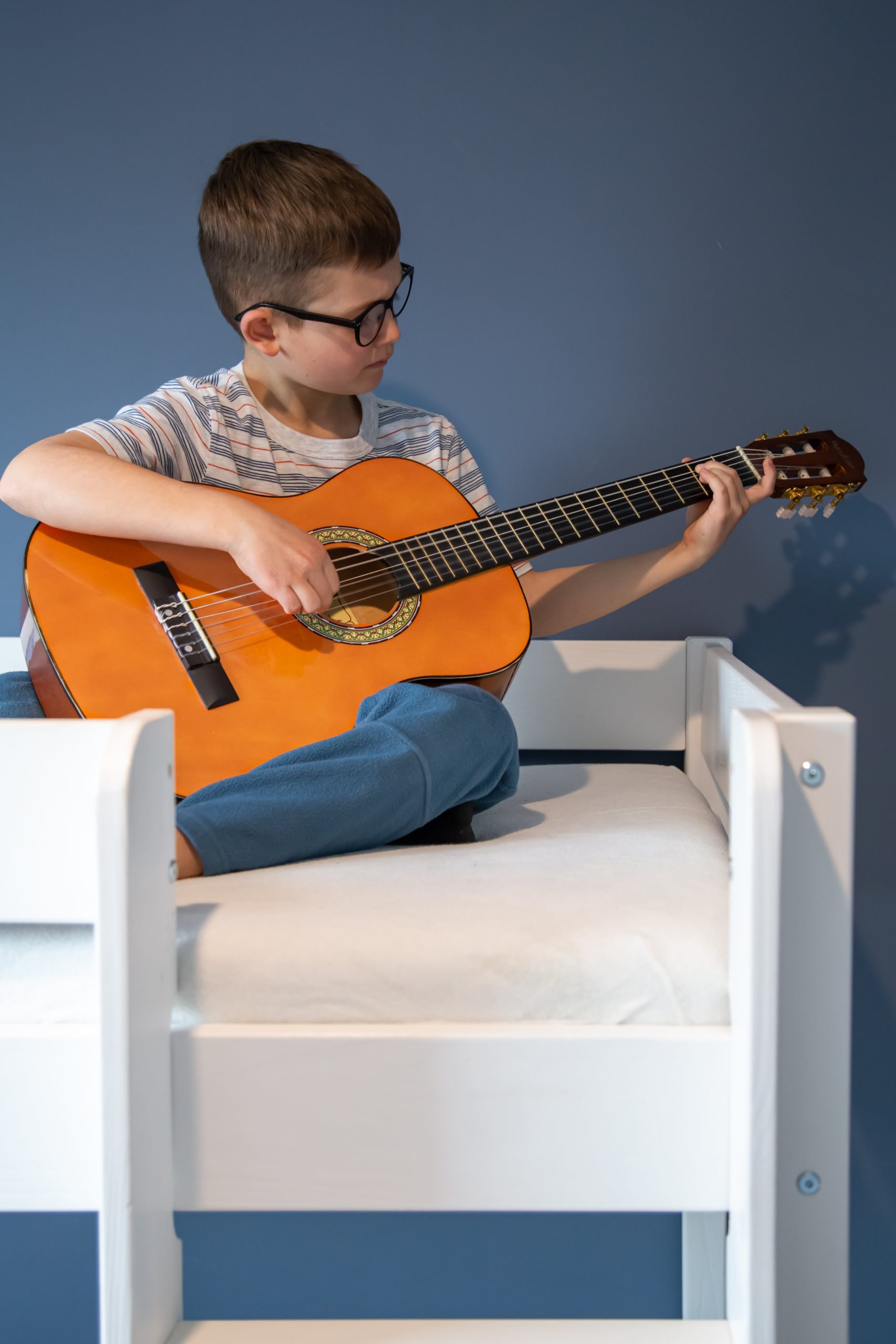
3/4 Size Guitars
The 3/4 sized guitar is the guitar that most kids start with. As mentioned, this is the guitar that kids ages 8 - 11 generally use. Fortunately, there are a lot more options to choose from as most guitar manufacturers recognize that many kids in this age range want to learn guitar. Here are a few guitars that have worked out well for my students.
Kids Guitar Academy Student Favorites (3/4 Size Guitars):
Price: $159
4.5/5
Yamaha JR1 3/4 Acoustic Guitar
The Yamaha JR1 is one of the most popular 3/4 size guitars on the market. This guitar is easy to play and has good tone for its size. The low price also makes it a winner for many families.
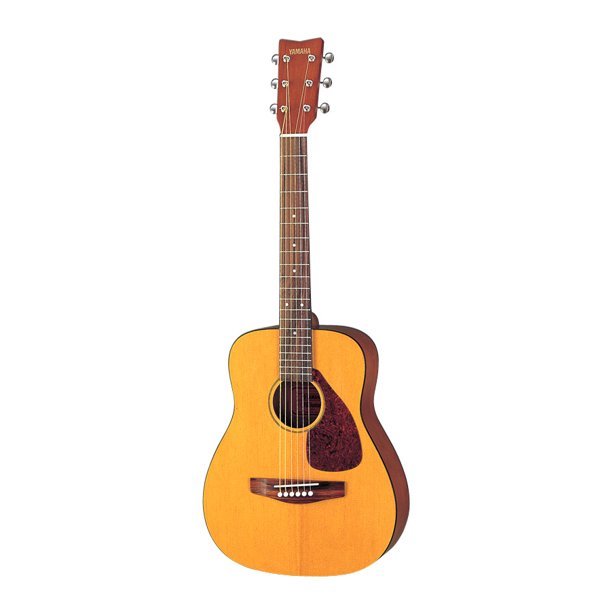
Price: $199
4.5/5
Fender Mini Strat 3/4 Electric Guitar
The Fender Mini Strat is the go-to electric guitar for kids. This guitar has great tone and is easy to play. Plug it into an amp and your ready to go!
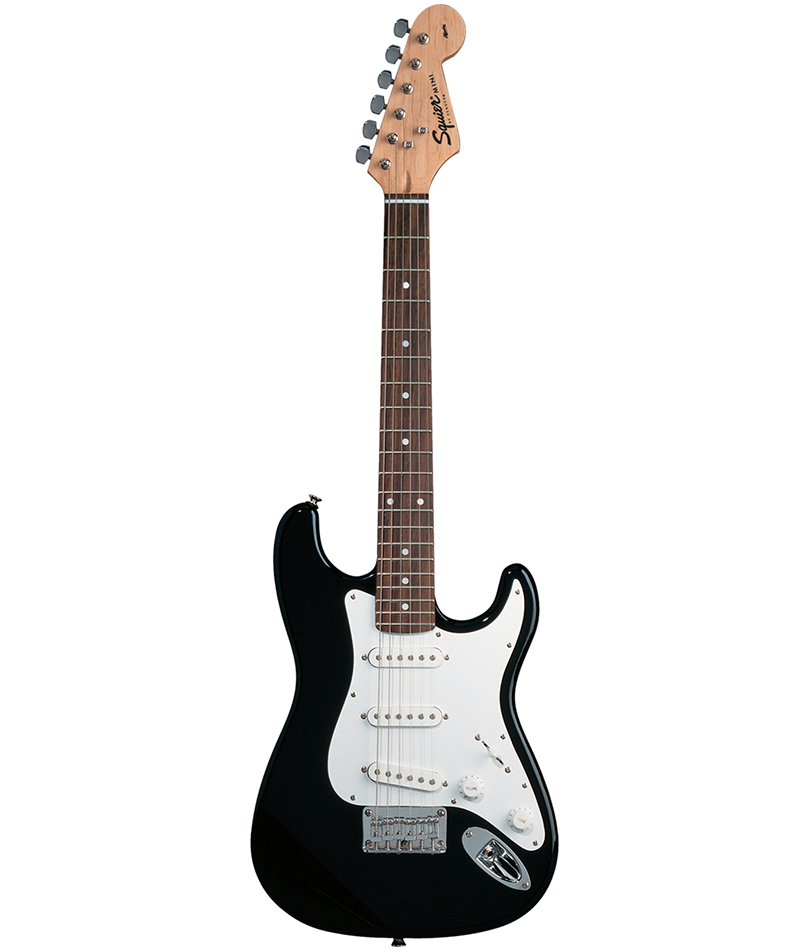
Price: $169
4.5/5
Fender Champion 20 Watt Amp
If you child wants to play an electric, then they'll need an amp. The Fender Champion 20 is a great practice amp for beginners--it's easy to use and sounds great right out of the box.
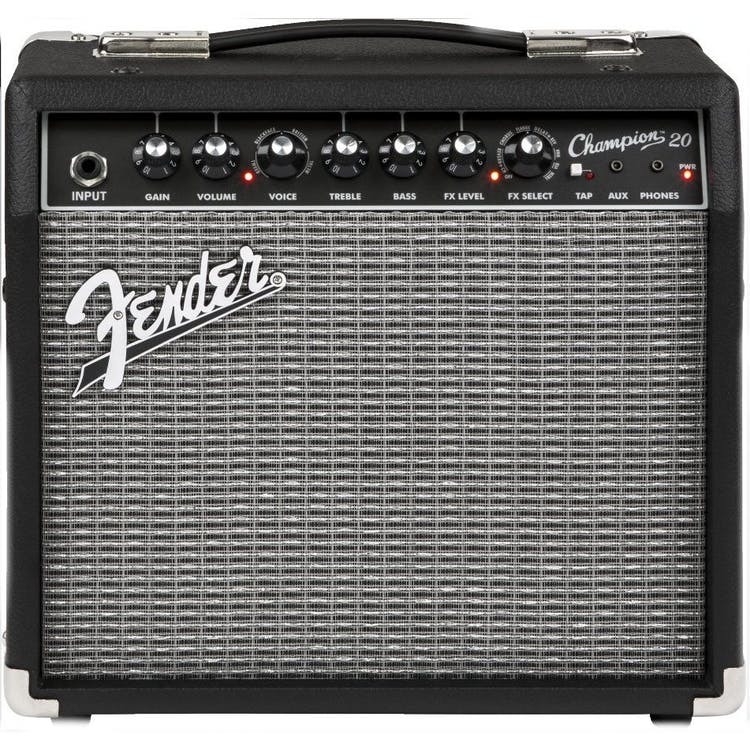
Full Size Guitars
Full size guitars are by far the most popular. Once your child reaches (or comes close to) 5'0 in height they will be ready to jump into a full size guitar. Here are a few options for both acoustic & electrics that have worked well for our students.
Kids Guitar Academy Student Favorites (Full Sized Guitars):
Price: $219
4.5/5
Yamaha FG800 Solid Top Acoustic Guitar
The Yamaha FG800 is hard to beat for the price. This guitar is well built, easy to play, and sounds great. One of the best entry level acoustic guitars on the market.

Price: $339
4.5/5
The Yamaha FSX800 Acoustic-Electric
Although very similar to its cousin (the FG800), the FXS800 also includes a cutaway for access to higher notes as well as electronics that enable guitarists to amplify the guitar. This is an awesome guitar for the price!

Price: $339
4.5/5
Fender Squire Stratocaster Electric Guitar
Similar to it's 3/4 sized little brother, The Fender Squire Strat is one of the most popular entry-level full sized guitars. Famous for it's versatility, this guitar is used in all styles of music.
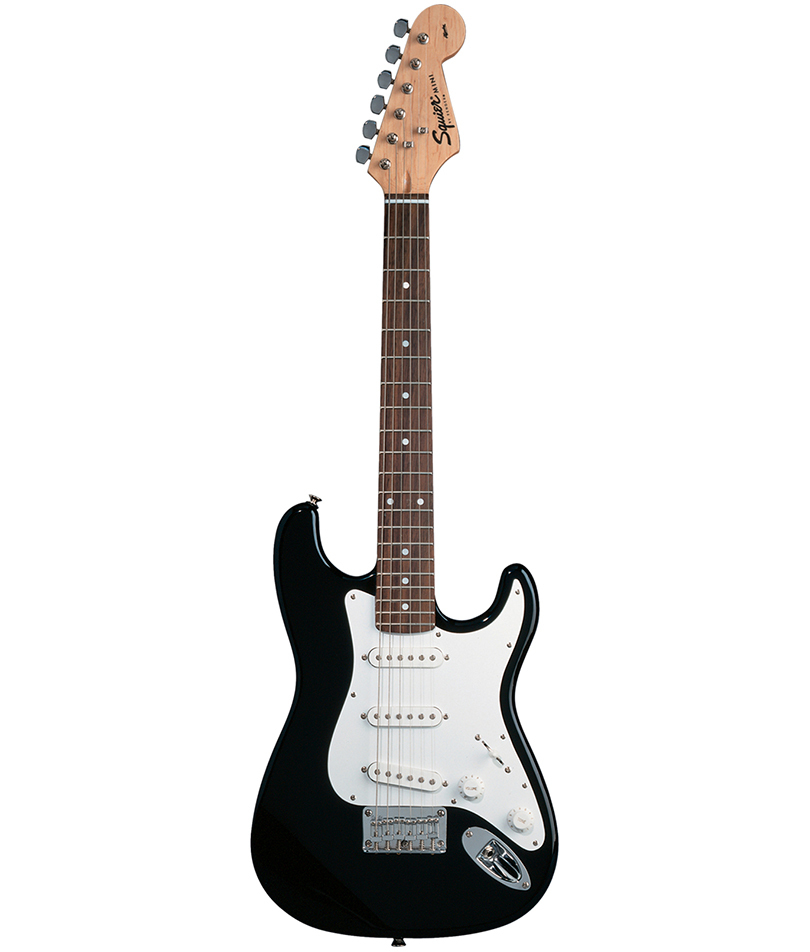
Price: $339
5/5
Gibson SG Electric Guitar
Have a student that's a little more in to rock-related music styles? The Gibson SG is well suited for the job! This guitar is easy to play and a favorite among rock guitarists.
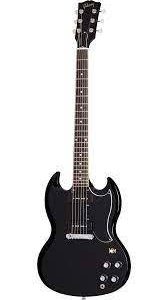
Price: $249
4.5/5
Fender Champion 40 Watt Amp
This is the upgrade to the smaller 20 Watt version listed above. Not only is this amp louder, but it has better tone than the 20 watt version.

Guitar Buying Tips for Parents
Tip #1: Don't be afraid to buy used.
For families on a budget, buying used can be a great option. In fact, there is very little difference between new and used guitars except for price. Used guitars play just as well as new guitars (sometimes better!)--and usually cost half the price.
A second advantage to buying used is the fact that you can obtain a higher quality instrument for the same price that you would have paid for a new one! It's important to know that a higher quality guitar will usually sound & play better--two very important factors when it comes to choosing a guitar.
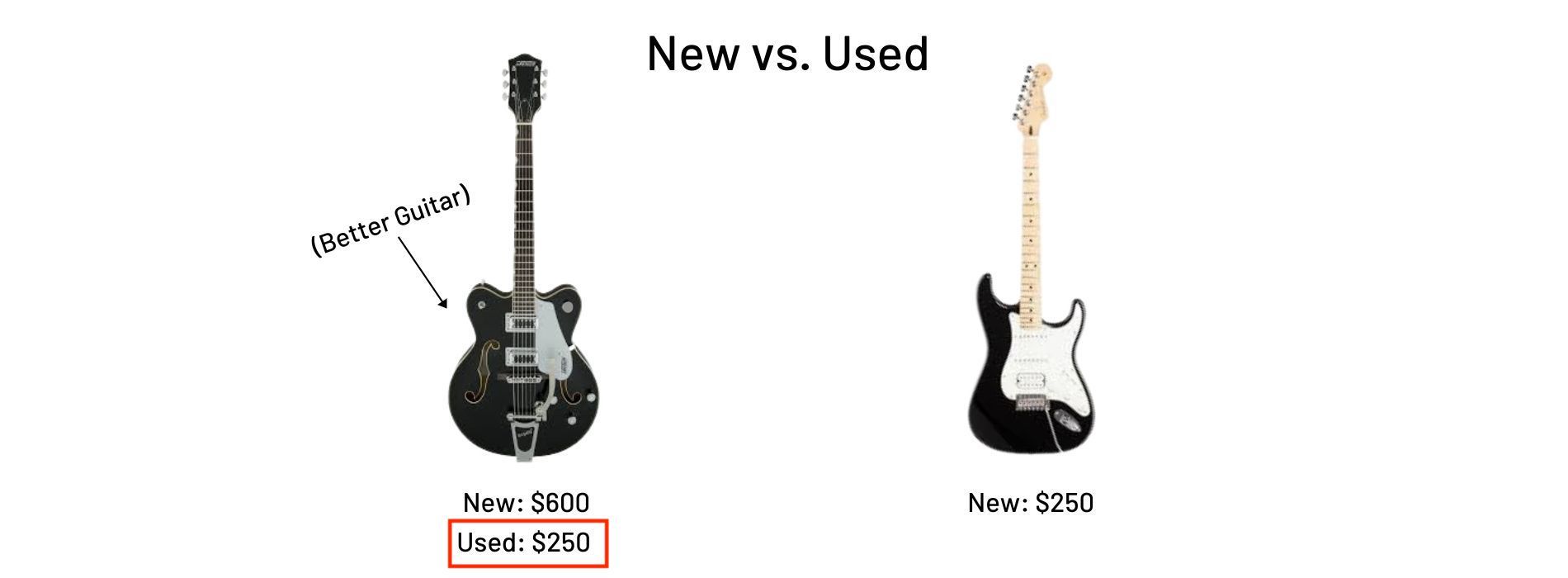
Tip #2: If your child is younger than age 7, consider starting with piano.
The truth is, guitar is not the best "first instrument" for young kids. The guitar requires significantly more strength and coordination to play than piano. That being the case, the drop out rate for children under age 7 is quite high for guitar (to see data on the relationship between student age and success at learning guitar click here).
As such, we recommend piano as an excellent first instrument to learn the fundamentals of music for kids under age 7.
A Final Recommendation
If you are a parent with a child or teen who is just starting out on guitar I highly recommend attending the free training that we created specifically for parents. In this training you'll learn the 5 keys to preparing your child for success at learning guitar. With each of these 5 keys in place your student's chances of sticking with guitar for the long-term increases dramatically!
JOIN THE FREE TRAINING!
The 5 Keys to Preparing Your Child for Success at Learning Guitar
